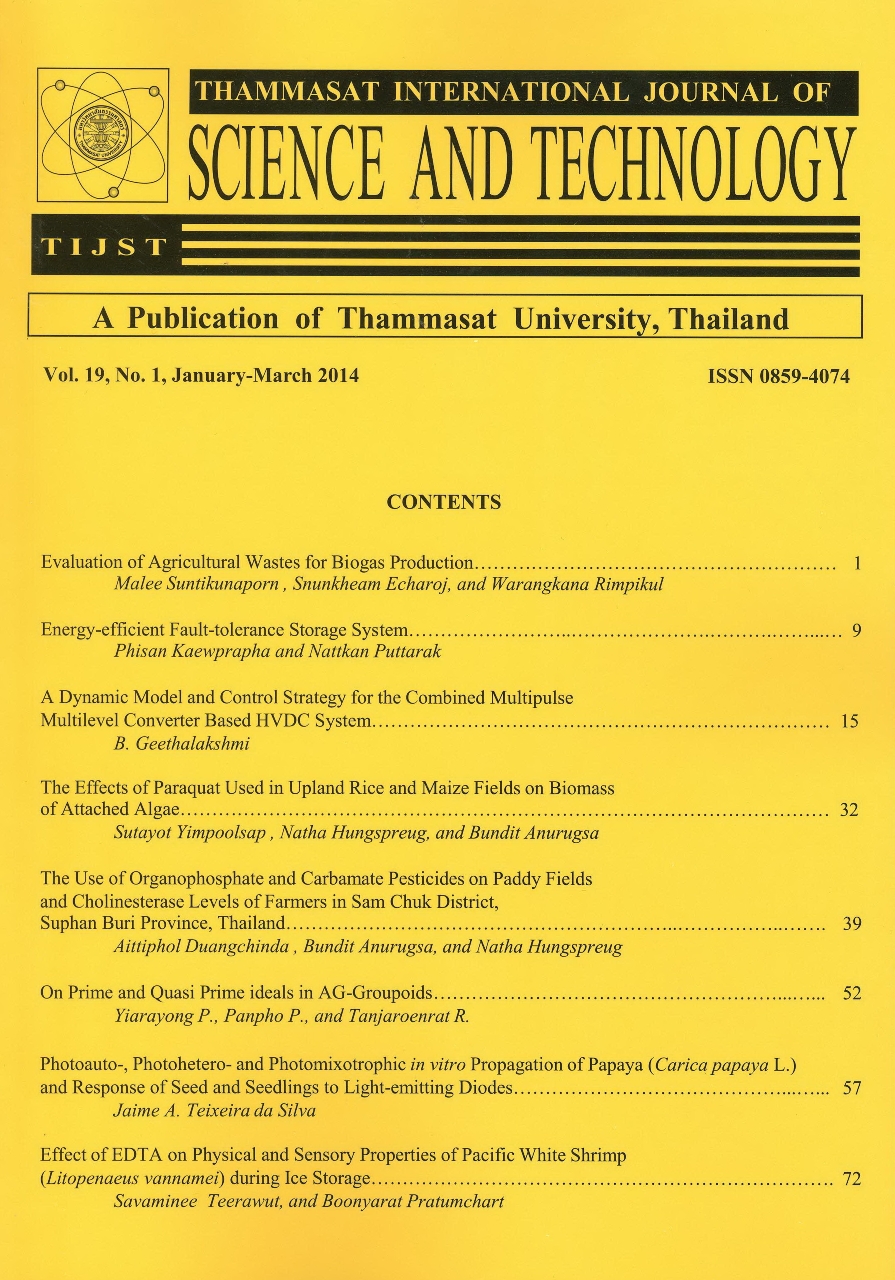Slope Stability of Soft Clay Embankment for Flood Protection
Main Article Content
Abstract
The purpose of this research was to study the characteristics and stability of the embankments used for flood protection. The embankments used in the research had a height of 2.00 and 3.00 meters, respectively. The width at the top of each embankment was 1.00 meter. The slopes of the embankments were equal to 1V:1H on both sides. The soil type used for filling soil in the embankment was soft clay. There were no soil compaction techniques used during the construction of the embankment. The steps taken in this research consisted of a soil shear strength test and permeability test for seepage analysis of the water flow through the simulation embankment in the laboratory, and a slope stability analysis of the soft clay embankment. The safety factor of the embankment would be reduced due to flooding over a period of time. Thus, the stability of the embankment was reduced due to increased moisture content in the soil and the seepage force in the embankment. The two-meter high soft clay embankment, with a slope ratio of 1V:1H and a maximum of 2.00 meters of water level on the side facing the flood water can protect from flooding for 60 days. Conversely, the three meter high soft clay embankment, with a slope ratio of 1V:1H and a maximum of 2.50 meters of water level on the side facing the flood water cannot protect from flooding for any length of time as deterioration starts from day 1.
Article Details
How to Cite
Sooksatra, V., & Jinga, P. (2016). Slope Stability of Soft Clay Embankment for Flood Protection. Science & Technology Asia, 21(2), 61–68. retrieved from https://ph02.tci-thaijo.org/index.php/SciTechAsia/article/view/59023
Section
Engineering


